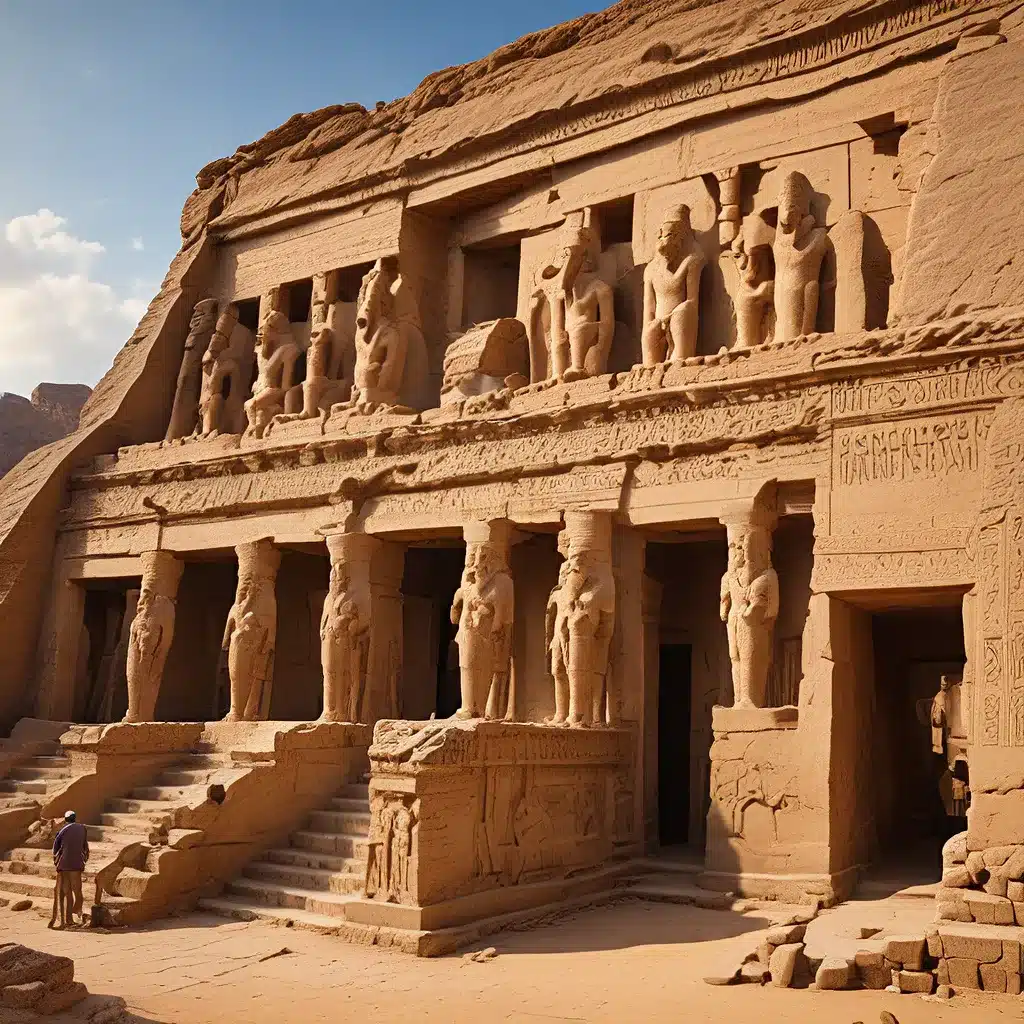
From the rugged deserts of Saudi Arabia to the hidden coves of the Mediterranean, the mysteries of ancient civilizations have long captivated the imaginations of historians, archaeologists, and the general public alike. In recent years, cutting-edge technology and collaborative research efforts have shed new light on these lost kingdoms, unearthing artifacts, deciphering inscriptions, and piecing together the fragments of once-thriving societies.
The Nabataean Enigma
One such enigmatic culture is the Nabataeans, whose sophisticated stone monuments and intricate trading networks have puzzled scholars for centuries. The Royal Commission for Al Ula, a Saudi-led initiative, is now spearheading a groundbreaking archaeological survey to uncover the secrets of this ancient civilization.
The Nabataean empire flourished in the first century BC to the first century AD, with their capital city of Petra in modern-day Jordan becoming a renowned center of commerce and culture. However, their presence extended beyond the borders of Petra, with the city of Hegra, or Madain Saleh, serving as their second capital in the heart of present-day Saudi Arabia.
Recent excavations in the Al Ula region of Saudi Arabia have revealed a wealth of Nabataean artifacts and architectural wonders, including elaborately carved tombs, temples, and even graffiti that provide valuable insights into their daily lives and beliefs. The scale of the survey, which covers an area roughly the size of Belgium, is unprecedented, and the findings are poised to reshape our understanding of this ancient civilization.
Unraveling the Mysteries of Water Management
One of the key focuses of the Al Ula survey is the role that water played in the Nabataean civilization’s prosperity. Rebecca Foote, the American archaeologist leading the survey, believes that uncovering the Nabataeans’ water management techniques could hold the key to understanding their economic and agricultural successes.
The Nabataeans were known for their sophisticated hydraulic engineering, constructing dams, aqueducts, and cisterns to harness and distribute water in the arid desert environment. By studying the intricate network of water systems, archaeologists hope to gain insight into the Nabataeans’ agricultural practices, trade routes, and overall societal organization.
Foote explains, “We can guess that they had a successful agricultural economy, but was there a tax on incense? How did they manage their water?” The ongoing survey, which utilizes cutting-edge aerial photography and remote sensing techniques, aims to provide answers to these long-standing questions.
Shedding Light on Pre-Nabataean Civilizations
While the Nabataeans have long held the spotlight, the Al Ula survey is also uncovering evidence of earlier civilizations that inhabited the region. Abdulrahman Alsuhaibani, a Saudi archaeologist involved in the project, has been excavating at the site of Dedan, which predates the Nabataeans by several centuries.
The discoveries at Dedan, a city that flourished during the first millennium BC, are shedding light on the cultures that laid the foundations for the Nabataean empire. These Dedanite and Lihyanite civilizations, though less well-known, played a crucial role in shaping the economic and cultural landscape of ancient Arabia.
Alsuhaibani emphasizes the importance of the Al Ula survey in illuminating these earlier civilizations, stating, “What makes this work so important on the world stage is that it will provide an account of not just Madain Saleh and Petra but earlier civilizations that are largely unknown to us.”
Technological Advancements in Archaeology
The scale and scope of the Al Ula survey would not be possible without the advancements in archaeological technology. The team, led by Jamie Quartermaine of Oxford Archaeology, is utilizing a combination of aerial photography, drone mapping, and high-resolution orthophotography to capture detailed images of the landscape.
These techniques allow the researchers to identify and document previously unknown archaeological features, such as burial sites, funerary landscapes, and rock art panels, that would be nearly impossible to locate through traditional ground-based surveys.
Quartermaine explains, “We’re using several different methods of photography, including drones, cameras suspended below the body of light aircraft, and cutting-edge aerial orthophotography.” The resulting high-resolution models of the terrain provide a comprehensive overview of the archaeological landscape, guiding the team’s targeted field investigations.
Rewriting the History of the Arabian Peninsula
The findings of the Al Ula survey have the potential to reshape our understanding of ancient history and the role of the Arabian Peninsula in the development of early civilizations. Rebecca Foote acknowledges that compared to the well-documented histories of ancient Egypt and Mesopotamia, the Arabian Peninsula has long remained a relative enigma.
“A great deal is known about the first to third millennium BC, and we’re well informed about ancient Egypt and Mesopotamia,” Foote says. “Yet comparatively little about the Arabian peninsula in ancient times has been discovered. Exactly how our findings will impact on understanding of ancient history, we don’t yet know, but it is likely to reshape the world view of earlier periods.”
As the survey continues, the team’s discoveries are expected to shed light on the trading networks, cultural exchanges, and technological innovations that defined the region’s past. By uncovering the secrets of the Nabataeans and their predecessors, the Al Ula project promises to rewrite the history of the lost kingdoms that once thrived in the heart of the Arabian Peninsula.


